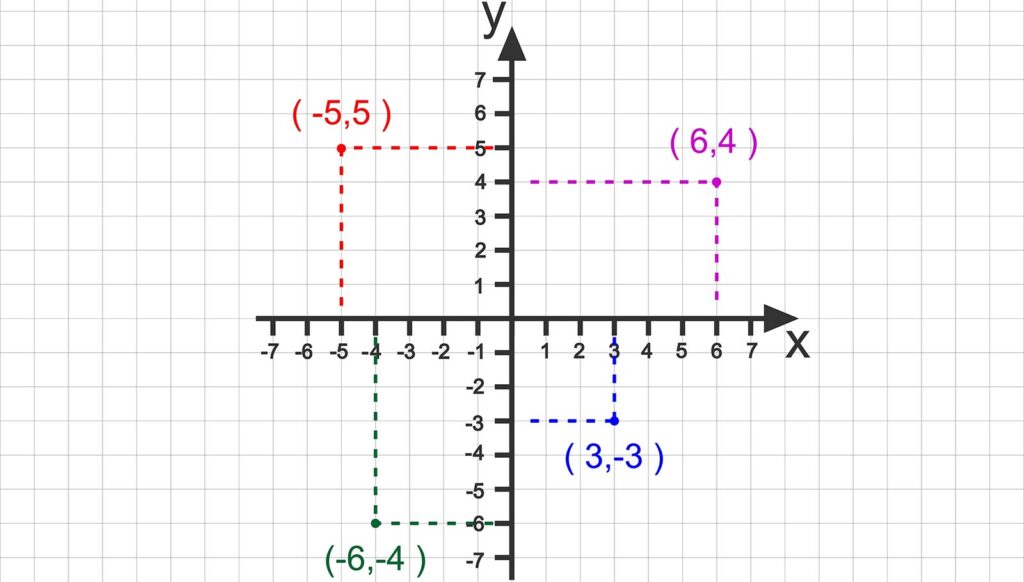The central intersection, or origin point, of the coordinate plane lies at (0,0). The horizontal x-axis and the vertical y-axis provide a map for plotting points. Points lie on the lines or fall within one of four quadrants labeled with Roman numerals.
Quadrant I
Quadrant I values are all positive numbers. Using a clockface as an illustration, the first quadrant of a coordinate plane lies between 12 and 3 o’clock. A plot point in this quadrant must have a positive x-coordinate to the right of the origin point (0,0) or a y-coordinate above the intersection.
Quadrant II
Continuing counterclockwise, the second quadrant is between 12 and 9 o’clock. This quadrant requires a negative x-coordinate and a positive y-coordinate, moving left and up from the coordinate axes origin.
Quadrant III
The third quadrant lies between 9 and 6 o’clock, or the bottom-left of the two-dimensional plane formed by number lines. Since this quadrant is comprised of a negative x-coordinate and a negative x-coordinate, plot points will fall below and to the left of the origin. All quadrant III values are negative numbers.
Quadrant IV
The final and fourth quadrant is comprised of values with a positive x-coordinate and a negative y-coordinate. This combination of positive and negative numbers falls below and to the right of the origin.
>>> Read full article>>>
Copyright for syndicated content belongs to the linked Source : How To Stuff – https://science.howstuffworks.com/math-concepts/coordinate-plane.htm
